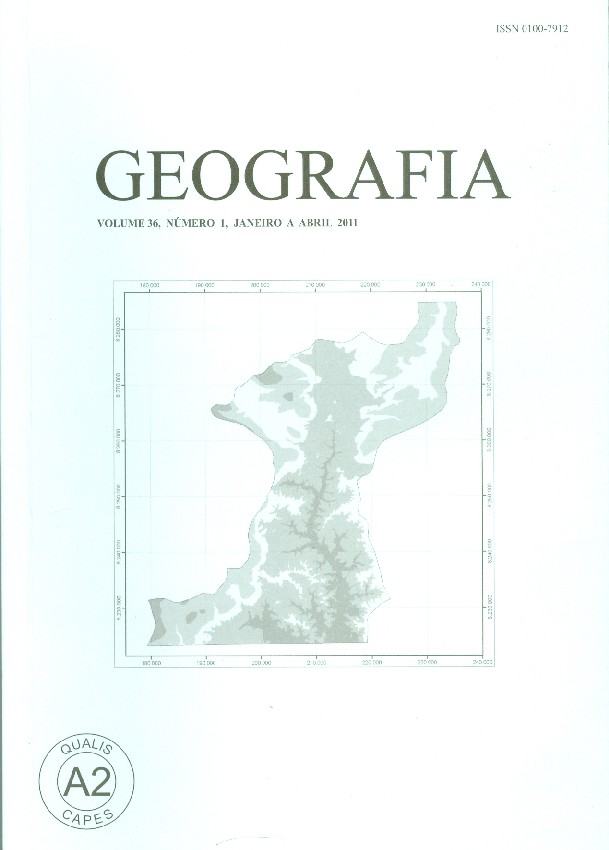NOVAS DINÂMICAS REGIONAIS: AS CONSEQÜÊNCIAS DA EXPANSÃO DA CULTURA DA CANA-DE AÇÚCAR NO TRIANGULO MINEIRO-MG
Abstract
Nesse artigo procura-se compreender as mudanças que a expansão da cultura da cana-de-açúcar produz no território. Dessa forma, identificam-se as transformações provocadas pela expansão desta atividade produtiva nos subsistemas que compõem o arranjo territorial do Triângulo Mineiro. Os subsistemas considerados são o político-institucional, o soioeconômico, e o ambiental. Partindo desses objetivos, levantamos a hipótese de que a expansão da atividade estaria provocando alterações consideráveis no arranjo territorial regional, visto através das alterações ocorridas em cada um dos subsistemas citados. Concluímos que o comportamento padrão desses subsistemas, o político institucional, o socioeconômico e o ambiental, nos municípios da região, forma um conjunto de características comuns, que define as particularidades que diferenciam o Triângulo de outras regiões. A nova geografia da produção canavieira no Brasil condiz com a realização dos ajustes nas relações de produção e o avanço de novas formas produtivas, que redefinem o papel dos lugares nos processos mais amplos de transformação do território. Subordina-se a natureza e as localidades aos interesses do capital, através da adaptação do meio técnico científico informacional. Palavras Chave: Triângulo Mineiro. Cana-de-açúcar. Sistemas regionais. Subsistemas territoriais. New regional dynamics: the consequences of sugar cane expansion in the Triangulo Mineiro-MG The purpose of this paper is to understand the changes that the expansion of the sugar cane produces in the Triângulo Mineiro, Brasil. For that purpose, we identify the consequences of this expansion in three basic territorial subsystems which are the institutional, the socioeconomic and the environmental. From this main purpose, we build our hypothesis that the expansion is causing a great transformation in the territorial dynamics of the region which can be seen through the alterations in each subsystem. We conclude that the standard behaviour of these subsystems in the cities of the region forms a set of features that define and diferentiate the Triângulo Mineiro from other regions. The new geography of sugar cane production in Brazil is part of the adjustments in the production relations and of the consolidation of new forms of production that redefine the role of places in the wider processes of territorial transformations. Nature and places are subordinated to the interests of capital through the adaptation of the technic, cientific and informational space. Key words: Triângulo Mineiro. Sugar cane. Regional systems. Territorial subsystems.Downloads
Published
Issue
Section
License
The authors maintain the copyright and grant GEOGRAFIA the right of first publication, with the articles simultaneously licensed under the Creative Commons BY 4.0 License, which allows sharing and adapting the articles for any purpose, as long as appropriate credits and provisions of image rights, privacy or moral rights. Other legal attributions can be accessed at: https://creativecommons.org/licenses/by/4.0/legalcode.en.
Geography, Rio Claro, SP, Brazil - eISSN 1983-8700 is licensed under the Creative Commons BY 4.0 License.





